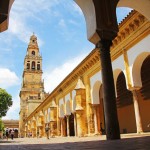New 7 Wonders of World – Powerful PR (14.06.15)
My last two blog postings focused on two destinations with strong claims to being one of the ‘Seven Wonders of the World’.

While the Great Barrier Reef would arguably make most people’s list of natural wonders, the Cordillera Rice Terraces, though excellent contenders for ancient, man-made and modern-day ‘wonders’, tend not to make the grade simply because they are less well known.
Although the true worth of any world wonder is in the eye of the beholder, what is not in doubt is the economic impact generated by a world-renowned site. Our appetite for visiting and admiring the world’s wonders is insatiable, with over a billion international traveller journeys across the globe each year. As selfie-sticks become the gadget of choice, a ‘wonder of the world’ backdrop has its own currency.

Original ‘Wonder of the World’
The Greeks started the craze in the 4th Century BC, as their conquest of the known western world opened the door to the ancient civilizations of the Babylonians, Egyptians and Persians. A list of places to visit (‘theamata’) soon grew as travellers began to record their favourite sites. From then on human inquisitiveness has got the better of many a traveller, trader, soldier, sailor, tourist and ticket tout.
Cartographers have had to step back since the proliferation of technology. The world’s most majestic sights have been recorded in minute detail by satellites, digital SLR cameras, video-recorders, smart phones and drone-cameras. As the ever expanding list of potential world wonders grew, so did the debate on what should and shouldn’t earn the classification. Fifteen years ago a popularity poll was set up by Canadian-Swiss Bernard Weber to establish what were the most popular ‘New 7 Wonders of the World’.

Attracting over 100m votes (one vote per person) the list, which started with guidance from UNESCO, was voted on over a seven year period. On 7 July 2007 the seven winners were announced: Taj Mahal, Machu Picchu, Petra, Great Wall of China, Colosseum, Chichen Itza and Corcovado (Christ the Redeemer).
Each ‘wonder’ experienced a surge in visitor numbers, fuelled by expanding world-wide social media opportunities and by the destinations’ own promotional initiatives.

As a marketing tool for the destinations themselves and travel industry holiday organisers such as Nomadic Thoughts, the ‘wonders’ proved highly effective. The impact has been immediate and impressive. Forget the fact that I, who have been fortunate enough to visit all of the ‘New 7 Wonders of the World’ (in addition to the Pyramids of Giza which were give a special mention) do not believe the latter three merit the status, the footfall says something totally different.
Whether measuring hotel reservations, entrance ticket sales or internet-search requests, the rise in visitor numbers has grown significantly. This in turn has boosted the local economy and enhanced many a traveller’s and tourist’s holiday experience.

For example in just one year after the vote, Peru’s National Institute of Culture claimed that visitor numbers to Machu Pichu had increased 70%, Chichen Itzas’ rose by 75% and Petra’s, 62%.
India’s Archaeological Department claims that the annual figure of tourists to the Taj Mahal – 3.2 million in 2007 – is now double that.
For my part as long as these ‘Wonders of the World’ are well managed, with a close eye on their overall sustainability, I see no reason why their benefits should not be enjoyed by all. As I have highlighted in many a previous blog, what the photographs, TV documentaries, drone flights and selfie stick images cannot truly convey is the sheer wonder of location, design, size and all-round ‘wow factor’ of these extraordinary locations.

You have a long list to get through! Starting with the other sixteen finalists: The Acropolis, Alhambra (Granada, Spain), Temple of Angkor (Cambodia), Eiffel Tower (Paris), Hagia Sophia (Istanbul), Kiyomizu Temple (Japan), Kremlin (Moscow), Neuschwanstein Castle (Schwangau, Germany), Statue of Liberty (New York), Statues of Easter Island (Chile), Stonehenge (Amesbury, UK), Sydney Opera House (Australia), Timbuktu (Mali)… and of course the Great Pyramids of Giza.







